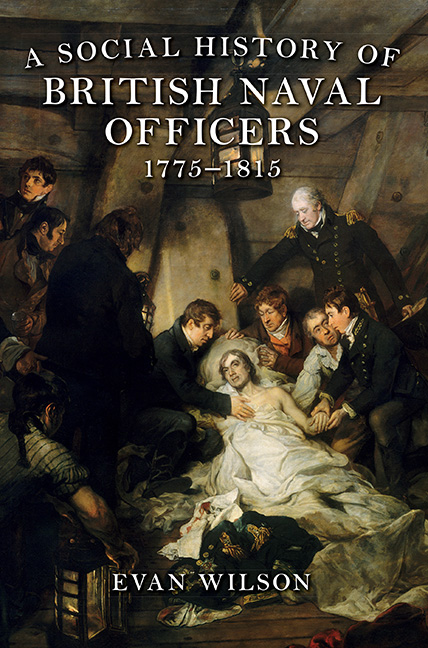Book contents
- Frontmatter
- Dedication
- Contents
- List of Illustrations
- Acknowledgements
- Abbreviations and Conventions
- Introduction
- 1 The Education of Young Gentlemen
- 2 Commissioned Officers’ Careers
- 3 Warrant Officers’ Careers
- 4 The Wardroom as a Social Space
- 5 Patronage and Promotion Prospects
- 6 Pay and Prize Money
- 7 Domestic and International Comparisons
- 8 Naval Officers’ Social Status
- Conclusion
- Appendix
- Bibliography
- Index
- Frontmatter
- Dedication
- Contents
- List of Illustrations
- Acknowledgements
- Abbreviations and Conventions
- Introduction
- 1 The Education of Young Gentlemen
- 2 Commissioned Officers’ Careers
- 3 Warrant Officers’ Careers
- 4 The Wardroom as a Social Space
- 5 Patronage and Promotion Prospects
- 6 Pay and Prize Money
- 7 Domestic and International Comparisons
- 8 Naval Officers’ Social Status
- Conclusion
- Appendix
- Bibliography
- Index
Summary
James Guthrie was born in Scotland in 1780. Not much more is known about his life before 1798, when he joined the navy as a surgeon's mate. Two years later, he received his first warrant. He was lucky in his appointment: his first ship was the fourteen-gun sloop Speedy, commanded by Thomas Cochrane. The commander-in-chief of the Mediterranean recognised that Cochrane was an aggressive and creative commander and gave him licence to cruise the shipping lanes off the Spanish coast. A typical incident saw Speedy sailing in company with five Danish merchantmen out of Barcelona. When two enemy ships approached, Speedy hoisted a Danish flag and acted as the convoy's escort. Guthrie later recalled, ‘The Spanish brig and French ship came right down upon us suspecting nothing and as we were edging towards the latter he hailed wishing to know what we wanted with him to which his Lordship replied it was just him we wanted.’ Replacing the Danish colours with British, Speedy opened fire and quickly captured both ships. The most famous of Speedy's exploits was the capture of the larger and more heavily armed Spanish xebec frigate El Gamo. At the height of the action, Guthrie volunteered to take the helm while Cochrane led the boarding party. Cochrane later wrote that ‘the doctor placed the Speedy close along with admirable skill’. The crew of Speedy split £1,394 in prize money following the action.
In early 1801, a powerful French squadron finally ended Speedy's amazing run, forcing her to surrender. By Cochrane's calculation, the Speedy had captured fifty prizes in the fifteen months he commanded her. After the capture, Guthrie served briefly with two other captains before re-joining Cochrane in Arab and then Pallas in 1804. Cochrane may have been a vainglorious and unreliable character, as well as a thorn in the side of his colleagues and superiors, but it was undoubtedly the case that service with him was profitable. On 15 February 1805, Pallas captured a Spanish ship from Vera Cruz full of mahogany, logwood, and, best of all, $432,000 of gold and silver coins.
- Type
- Chapter
- Information
- A Social History of British Naval Officers, 1775-1815 , pp. 131 - 154Publisher: Boydell & BrewerPrint publication year: 2017



